


One of the most frustrating areas has been managing mobile advertising – if we wanted a specific mobile message and campaign we had to setup a separate Mobile campaign, with separate adverts and landing pages.
That was, until now (wait for fanfare) and the joy of ‘Enhanced’ campaigns from Google. Now you can manage devices, adverts, sitelink changes and conversion types all in one place.
Let’s look at the good stuff:
This brings it all into one place, tidying up campaigns, and the migration assistant is helpful for merging campaigns which had previously been separated. Great… but, what’s that you say, that’s not all? There’s more…
You mean this is not ‘all good’. Sadly not, as usual, this there are some major wins for Google – they just don’t like to shout about it. In fact they like to take us all on a voyage of ‘discovery’ whilst they read the short-term benefits. The two main immediate benefits for them are:
The main aim of this change is to increase mobile advertising spend. Once this ‘upgrade’ is rolled out fully mobile-targeted advertising will go up which is bad news for both those who currently use mobile advertising through Google (they will have to pay more), and those who wander in without really knowing what they are doing and wasting marketing spend.
You cannot, as it currently stands, run a mobile-only campaign. If you want to target mobile users, you have tablet and desktop adverts whether you like it or not. This is part of the grand plan to not allowing advertisers to skim the cream off the top of their campaigns. However it further waters down performance for those who wanted to improve performance.
On top of that, you cannot change your bid for Tablets in relation to Desktops and Laptops – the flexibility has been limited there deliberately to increase reach, adverts on Tablets and, essentially to increase revenues into Google.

Tweaks will also be made to the back end algorithms to further increase share of revenue from advertisers. So, don’t expect performance to remain the same, it will not, it will change. Look at your conversion rates and yields carefully, because if you don’t do anything, your performance will drop and you need to know why (and what to do about it).
On the face of it, the benefits outweigh the disadvantages, however that’s not actually what’s happening here. Google are simplifying something that has got overcomplicated but in the process has deliberately shut a few doors which had been nice pockets of opportunity for the savvy PPC agency. That’s not to say there isn’t opportunity, it’s just a case of finding ways to develop campaigns in different ways. Another learning curve!
This change is going to particularly hurt pure-play Mobile (and or Tablet) advertisers who will suddenly find themselves unavoidably targeting devices they do not want to reach. There are a few ways around this though, so get in touch if you want some help!
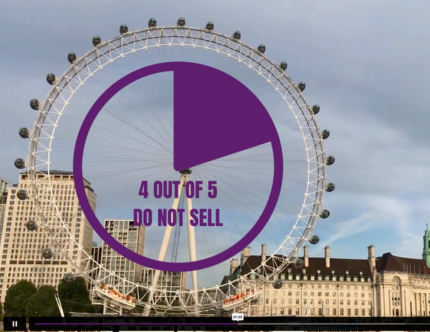
When it comes to mergers and acquisitions, clarity of message and presentation is paramount. We worked closely with the client, writing a script, choosing a voice-over artist, stitching together images, video and illustrations.
The two videos were short enough to share on social media, but professional enough to take pride of place on the website – raising the profile and credibility of Unloq and with more to come.
How best to display some of the finest tree houses and climbing frame builds in the UK? We used a combination of close-up and drone footage to showcase Gardenatics’ custom builds.
It makes the website stand out, differentiating from the competition and justifying the quality and value on display. It has helped them continue to win new clients across England and Wales looking for that premium option.

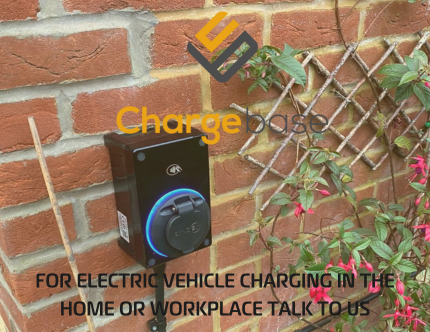
With a number of local teams, we needed to come up with an ad strategy that ensured that the value of the job, and the journey time would make profitable commercial and residential enquiries for Chargebase.
A lightweight, geographically tight, precisely worded set of campaigns was plugged into the business. And the lights went on!
Three different websites, covering all continents and over sixty countries. Two are e-commerce, one is lead-generation and all need to be tracked, measured and accounted for.
It’s hardly a simple task, but one we are up to. Having helped quadruple their online sales in the UK, we are now ramping up North America and the rest of the world.

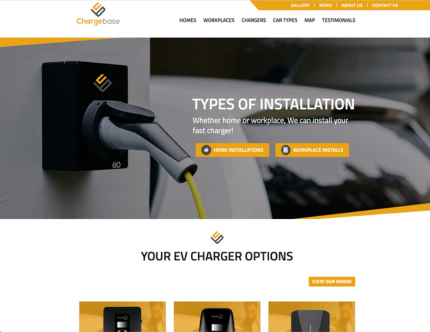
It’s always exciting working on a new venture. Chargebase has developed a direct-to-market proposition for car chargers, as well as a turnkey approach to home electrical work.
From developing their branding, building two distinct websites with two different online lead generation strategies, we have worked with the management team to launch a one of the South East’s leading EV specialists.
We have moved HCL from an expensive exercise in bug-fixing of two frustrating shopping sites to a rapidly growing successful online enterprise.
There are two brand new shops, generating four times the revenues of the previous incarnations, as well as a lead generation website covering their offshore and seawater protection systems for wind turbines, electric cables and offshore constructions.
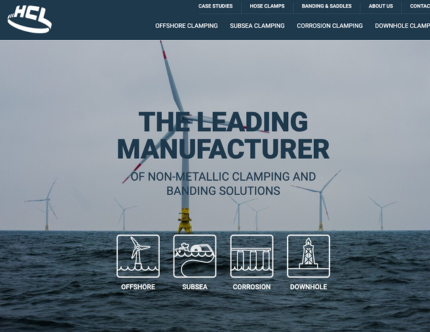
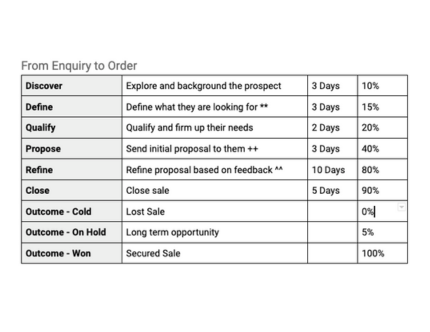
The practice had just recruited a manager and was looking to bring together all their enquiries and proposals into one place. We recommended, configured and launched a CRM for them that gave them visibility over all their leads.
As they developed their services, and added to their team, we let them adapt and shape the process to remain ahead of the pack.
With a growing sales team, and a range of clients and business partners with differing demands, we needed to not only store records, but also to drive the business forward.
We set up the various Opportunities, Tasks, Tracks and Tags to match the way in which the business went about the value chain and to segment their prospects and customers. We imported all the data from their previous CRM to track and store everything. We helped with adoption, and now no lead or opportunity goes to waste.
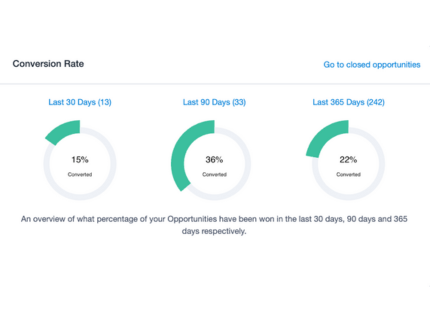

Taking on an unexpected full rebrand in thirty days was not necessarily part of the remit, but we’re always up for a challenge.
New iconography in place with a subtle and yet distinct nod to hydraulics and the ‘D’ for Domin. We also founded and formed a proper brand book to ensure that consistency remains in place for cross-media activity.
It’s always a challenge taking an established business, with all the heritage that comes with the old. However, backed by a supportive client, we took them from a ‘WordArt’ style to something that is as flexible as their clamps!
You can see the nod to the product range, but this is such a versatile logo, portrait, landscape, white out of colour. It allows imagery, buttons and offers to pop as it has clarity and style.
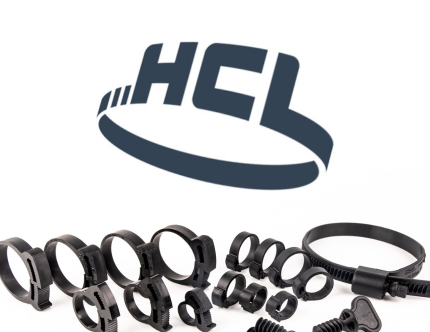

In my line of work, each visit is valuable due to the specialized nature of the field. Instead of prioritizing quantity, we put more emphasis on the quality of inquiries.
Through our analysis, we identified specific keywords that were highly effective in generating leads for Nautilus. To capitalize on this, we created two separate websites catering to different audiences and tailored them to different sets of keyword clusters.
With a number of local teams, we needed to come up with an ad strategy that ensured that the value of the job, and the journey time would make profitable commercial and residential enquiries for Chargebase.
A lightweight, geographically tight, precisely worded set of campaigns was plugged into the business. And the lights went on!


What is there not to love about kids and garden play? The photos are great, settings wonderful and the structures are pretty awesome. But, to be honest, you can’t have photos of children included and then all the structures are based around the same ‘ingredients’.
So, you need to become storytellers, as tree houses and adventure play is about the joy and fun to be had by small and large adventurers as their ideas spark into life. It’s the story we tell!
When you have a range of products that is not very ‘instagrammable’ then it’s easy to lose sight of why they matter and how to promote them effectively. Though these products are small and seemingly uninspiring, they are vitally important to the users.
They stop leaks and breakdowns, electrocution and pier collapse. They help machines function, and cars motor. In short, there is a lot to say, if you have imagination.


In my line of work, each visit is valuable due to the specialized nature of the field. Instead of prioritizing quantity, we put more emphasis on the quality of inquiries.
Through our analysis, we identified specific keywords that were highly effective in generating leads for Nautilus. To capitalize on this, we created two separate websites catering to different audiences and tailored them to different sets of keyword clusters.
A new website is always an opportunity, but also a challenge to retain existing rankings and then build from there. Working closely with the client, we set to work on the site from an early stage advising on content, site structure and producing a thorough keyword audit.
As the site was prepared for launch, we updated the metadata, titles and tags, reviewed the internal linking, and the website was successfully launched, immediately seeing traffic and rankings improvements.


Having worked with Nautilus Sailing for over ten years, through three websites where we developed and optimised a highly effective lead generation system, we have helped them grow from two locations to eight. From two instructors to a team of ten.
They focus on running the finest skipper school on the planet, we get them the customers who want the best experience.
It should be simple to find leads for EV charging in the South East of England, but sometimes what looks easy is, in fact, a real technical challenge.
Firstly, whilst there is a lot of searching for EV points, we only want to target those who want an installation. Secondly, we also need to avoid congested areas where there is only on-street parking. Finally, they had a preference for commercial, not residential installations.
Not so simple, but we plugged away and found a steady flow of electric leads.

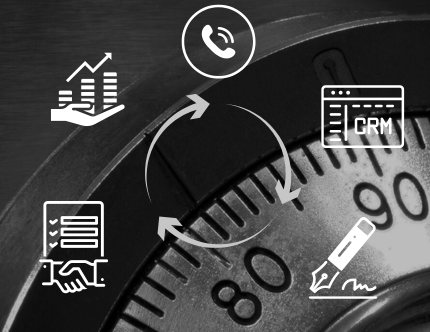
Storing business data is easy, it’s tough to make it accessible as and when it is needed. We worked closely with Unloq so not only do they track all projects, contacts, businesses and introductions, but also these are all within reach. Company records are enhanced using API and AI technology.
We have also joined up digital signing, mailing data, contact records, online dashboards and project tracking to make sure that all is synchronised and efficient.
An engineering firm wanted to build business but also be equipped to grow. With a new practice manager in place who was committed to digital transformation, we integrated CRM, task management and project tracking systems to create a system that works for them.
It now tracks quotes, commissions business, pushes through deadlines, keeps clients aware of progress and helps them deliver high quality structural engineering projects on time and on brief.
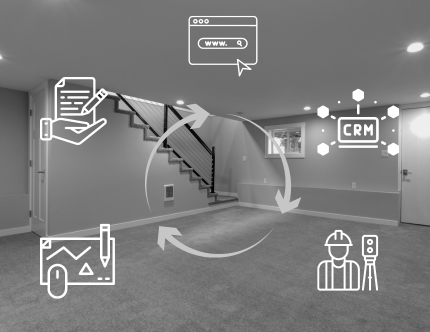

If you’re challenging an established industry where cost, supply chain and value is a mystery, then what better way to differentiate than do the opposite.
We created transparent pricing, clear discounts, delivery expectations and global dispatch. Each product had about a thousand combinations, so clients could order exactly what they wanted.
Having worked with Nautilus Sailing for over ten years, through three websites where we developed and optimised a highly effective lead generation system, we have helped them grow from two locations to eight. From two instructors to a team of ten.
They focus on running the finest skipper school on the planet, we get them the customers who want the best experience.


Tree houses and climbing frames are really easy to share, every family loves some active play. However, for Gardenatics we needed to make sure that we selected the right strategies for the right platforms.
In particular, the Pinterest channel we created for them gave great scope and leverage for the brand, as photos of builds were pinned far and wide and, given the bespoke nature of the constructions – future customers knew the best brand to help them with their garden was, of course, our client.
Unloq’s aim is to stand out and be different in the M&A world, but at the same time, to give confidence in the services they offer. They have to both be confident and discreet, persuasive but measured.
Our social media strategy is to ensure that we use a combination of videos, stings, dynamic messages and text to continue to reinforce the values and services which make our client the best route to inorganic business growth.


If you’re challenging an established industry where cost, supply chain and value is a mystery, then what better way to differentiate than do the opposite.
We created transparent pricing, clear discounts, delivery expectations and global dispatch. Each product had about a thousand combinations, so clients could order exactly what they wanted.


With a growing reputation, but skippering being seen as a one-hit sale, it seemed that repeat business would be a challenge. However, Nautilus had two strategies we were able to support with very effective marketing campaigns.
Firstly, they now have an Alumni network called ‘The Tribe’ who regularly go on flotillas with each other, coordinated by Nautilus. Secondly, they have catamaran deliveries where different teams are assembled to take their boats point to point, often across oceans – another level of experience!
HCL had a burgeoning database of current and past clients but relied on their memory, loyalty and the occasional call to increase repeat business. This meant that they were overspending on new customers and not looking after the ones they had won.
We engaged with them and helped them segment their database, identifying which clients were interested in which products, how they preferred to order and to come up with a meaningful, frequent contact strategy. Business is booming.
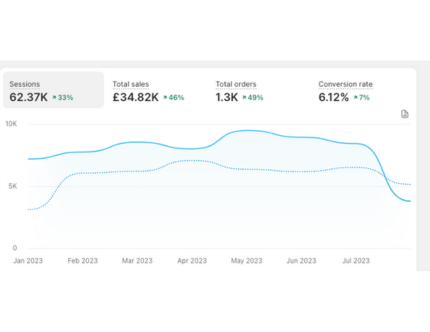

Taking on an unexpected full rebrand in thirty days was not necessarily part of the remit, but we’re always up for a challenge.
New iconography in place with a subtle and yet distinct nod to hydraulics and the ‘D’ for Domin. We also founded and formed a proper brand book to ensure that consistency remains in place for cross-media activity.
It’s always a challenge taking an established business, with all the heritage that comes with the old. However, backed by a supportive client, we took them from a ‘WordArt’ style to something that is as flexible as their clamps!
You can see the nod to the product range, but this is such a versatile logo, portrait, landscape, white out of colour. It allows imagery, buttons and offers to pop as it has clarity and style.

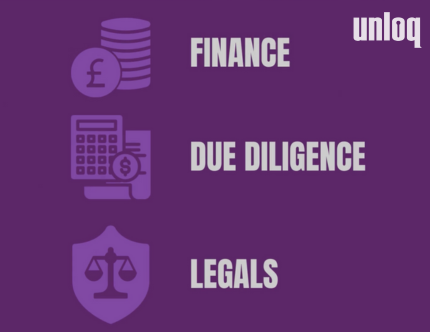
Mergers and acquisitions marketing imagery rife with stock photos of business meetings, office blocks and cityscapes. But Unloq is different. The name is the focus: to unlock opportunities, unpick information and open up value for clients.
So the imagery is simple, clean and relates to the process of unlocking rather than the environment. We recommended striking black and white imagery that nails the brief, engages the viewer and turns attention to messaging and actions, whilst complementing the brand palette.
Structural engineering is a challenging sector to visually attract as well as get a message across. The process is dry, technical … and when being installed is just plain muddy.
However, the end result showcases the hard work that has gone before. Beautiful outcomes are the result of painstaking planning and meticulous production. We use imagery of the future to create that desire today.


The practice had just recruited a manager and was looking to bring together all their enquiries and proposals into one place. We recommended, configured and launched a CRM for them that gave them visibility over all their leads.
As they developed their services, and added to their team, we let them adapt and shape the process to remain ahead of the pack.
With a growing sales team, and a range of clients and business partners with differing demands, we needed to not only store records, but also to drive the business forward.
We set up the various Opportunities, Tasks, Tracks and Tags to match the way in which the business went about the value chain and to segment their prospects and customers. We imported all the data from their previous CRM to track and store everything. We helped with adoption, and now no lead or opportunity goes to waste.

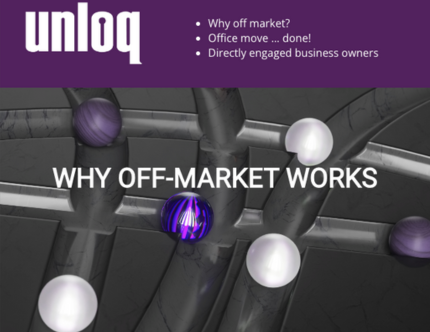
High-value, low-volume email marketing requires a specialised approach. One that speaks the right language to partners, clients and prospects, whilst underpinning the values that make Unloq’s services unique.
With split lists, containing some shared and some unique content, we have created variety without the overhead of coming up with three completely new emails every time. Precise, targeted and confident – just like our client.
With a wide range of products, applications and service offerings, HCL could be seen as demanding. Yet, by integrating segmentation techniques on company size, sector and purchase history, we are able to choose the audiences to send emails to, and uncover what works.
Each email is scoped, the audience identified, professionally written, designed and then integrated with tracking from within the email as well as through analytics.
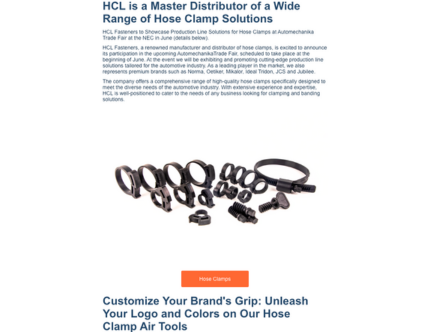
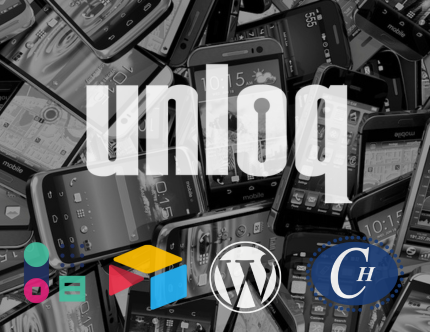
Our client had already adopted some systems, and whilst using cloud-based technologies, it was still mainly mail, calendar, documents and spreadsheets.
We worked closely with them first putting in place a CRM, then a no-code platform to run their projects and have continued to make them more efficient, paperless and collaborative than ever before.
When we initially worked with Nautilus, they had grown successfully on an inbox and a spreadsheet. For a small business, that makes sense and keeps it simple, but it becomes harder the more conversations, quotes and bookings are managed.
It became clear that they needed to collaborate and track more.
With an envious Tripadvisor rating, their customers expect the perfect experience. Having scoped out their requirements, we helped them choose the right CRM and then helped scope it out to fit their needs perfectly. Now their office team of four can work together, using a range of communication channels to get the job done.


Two websites offering a wide range of services, where quality leads are of high value, but there are large volumes of time-wasters, it is vital to ensure that every lead is accounted for.
Our ‘secret source’ for them tracks from Ads, Organic, Google Analytics 4 and in their CRM to make sure that we know exactly the cost of every good opportunity. In that way, we can flex accordingly.
With five different types of lead, and several marketing channels, and a brand new website, we needed to work really carefully to knit together the best tracking solution to account for the cost of inbound.
Then, working with the client, we can also place a value on each type of lead, to ensure that we continue to drive value to both our client, their recruiters and future candidates.
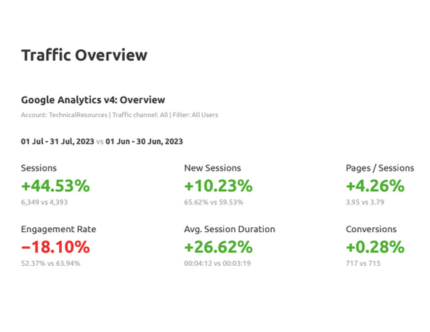

Intent led, tracked and accounted for profitable marketing spend

Motivated enquiries, in the buying cycle, who fit your ideal target market

Make processes more efficient, thorough, predictable and measurable

Fast and reliable cash-generative e-commerce and lead generation websites

Rankings with purpose, targeting your converting keywords

Modern, digital, flexible brand, guidelines, messaging and identity

Short, sharp videos designed specifically for the right media channel

Smart, precise imagery demonstrating design with purpose

A clearly segmented customer base with fine-tuned strategies for repeat business

A connected analytics layer providing confidence in tactical and strategic marketing work

Refined, considered and targeted persuasive copy with calls to action

Well-considered, precise, relatable and polished content

Focused varied marketing content, adapted to suit customer profiles

A store where the stock, turnover, margins and yield dwarfs the marketing spend

Win and retain more business by selecting the right CRM and systems

Joined up, cloud-based systems which optimise operations




